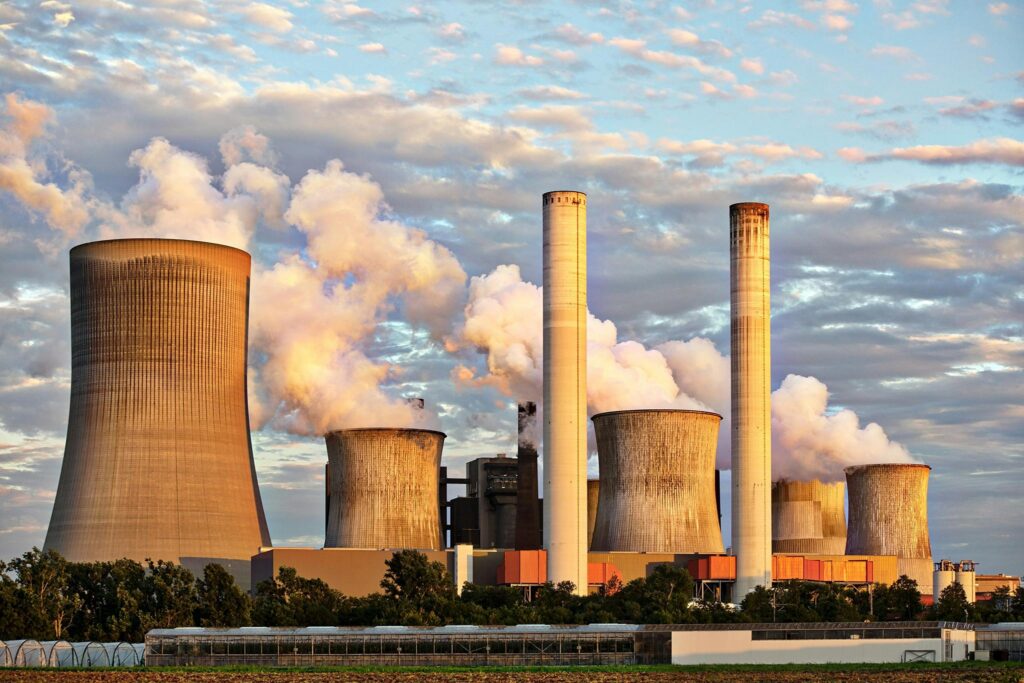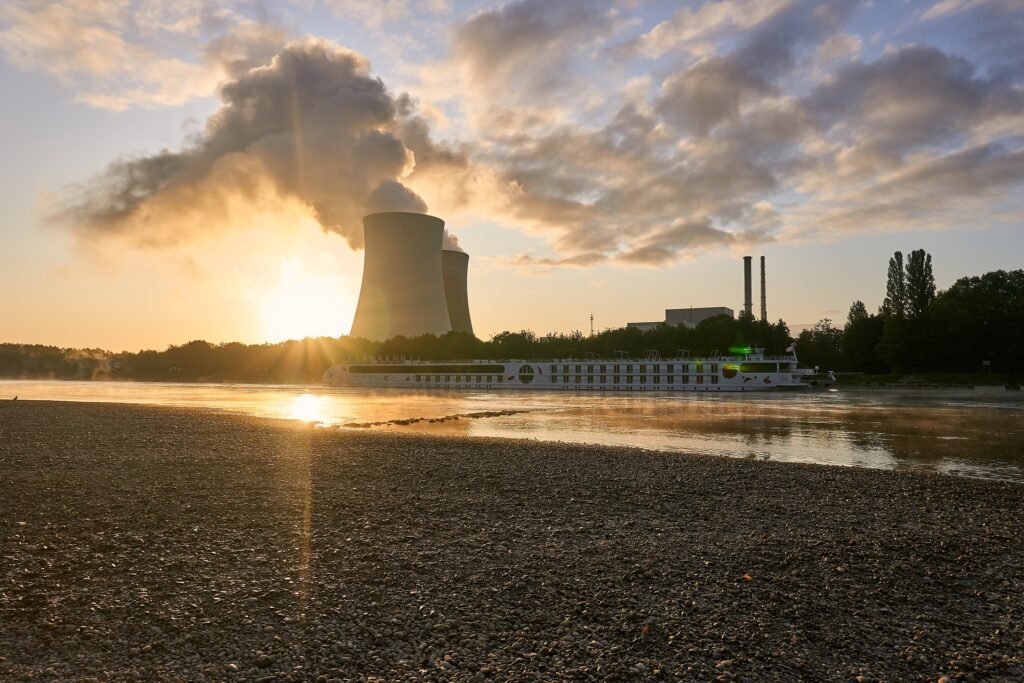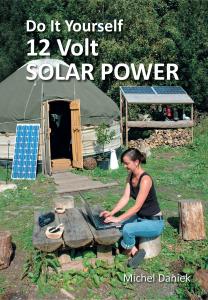
Whether or not nuclear energy should belong to the category of a renewable or a nonrenewable source has long been a matter of controversy on a global scale. With reasonably valid arguments from both sides, major organizations cannot agree on nuclear renewability status—a distinction that holds huge implications for global climate policy.
Other influential authorities, however, do not classify nuclear as renewable, relying as it does on mined uranium found in finite quantities. Current reserves can maintain the current usage for 100 years, which is still limited for expansion.
However, uranium can be harvested from seawater, which naturally replenishes. Nuclear also emits minimal carbon in its lifecycle like wind and solar, therefore a complement to fighting climate change. And the fact that nuclear power generation can contribute 20% of the clean electricity needed to the world may also make it fit the definition of renewable.
As countries vie to achieve carbon neutrality, every low emission power source could play a role – including nuclear. However, nuclear energy also holds a special distinction—being the only single energy source through which an accident could single-handedly contaminate the whole globe, or many big pieces of it—an existential risk that puts a pause in thinking and certainly takes away from its sustainability. A nuked planet isn’t very sustainable, aftertall. But understanding all facets of this nuanced debate helps nations develop truly sustainable solutions.
Renewable vs. Nonrenewable Sources of Energy Categorization
Renewable and nonrenewable energy categorizations serve as fundamental building blocks of climate policy worldwide. Gaining clarity on where nuclear power fits within these classifications is crucial.
Renewable Energies Definitions
The five most commonly recognized renewable sources of energy are solar, wind, hydropower, geothermal, and biomass. In other words, the commonest feature of renewable energy is that it is obtained from sources that naturally replenish, i.e., the sun, the wind, the tides, and plant matter.
While no energy resource is infinitely renewable, these sources replenish on timescales of days to years, allowing for sustained harnessing.
Nonrenewable Energy Context
On the contrary, nonrenewables—the likes of coal, oil, and natural gas—were formed over hundreds of millions of years by geological processes. These finite resources draw from fixed underground stocks that deplete with extraction. Even uranium ore for nuclear power is only available in limited quantities, taking eons to form naturally.
Global uranium resources could therefore provide the existing nuclear energy production with another hundred years or so. This, of course, may prove to be a limitation to the massive enlargement of this field compared to “limitless” sources like solar or wind.
It has further positioned nuclear for a renewability classification, as it adopts a notion that uranium can be extracted from seawater, and it continues being regenerated over the timescales matching human use.
Nuclear’s Emissions and Land Use Profile

When assessing nuclear sustainability, its emissions profile and land use efficiency warrant consideration alongside renewability factors.
Nuclear’s Ultra-Low Carbon Emissions
- Nuclear energy generates very low lifecycle CO2 emissions, on par with wind and solar power.
- Per kilowatt-hour (kWh), nuclear emits just 12 grams of CO2. Compare this to solar’s 22-44 grams and wind’s 11-22 grams per kWh.
- This minimal carbon footprint aids nuclear’s role in climate change mitigation, producing ample clean baseload power.
Nuclear’s High Power Density
- Nuclear power has by far the smallest physical footprint of any energy source.
- A nuclear plant generating 1,000 megawatts (MW) requires around just 1 square mile of land.
- To generate equivalent power output, solar and wind farms would need 75 and 260 times more land area, respectively.
- This demonstrates nuclear’s superior power density and land use efficiency relative to renewables.
While the uranium supply raises concerns, nuclear emissions profile and land use strengths provide tangible climate benefits. This context enriches the complex renewability debate surrounding this vital carbon-free energy source.
Sizing Up the Shifting Economics of Nuclear, Solar, and Wind
When it comes to keeping the lights on and electricity flowing, cost matters. As countries strive to clean up energy grids, economic factors weigh heavily alongside environmental impacts. Regarding expenses, solar and wind have abruptly moved in front of nuclear as unexpected front-runners.
Nuclear energy has long been regarded as an affordable clean electricity source. But that perception is changing as the cost of renewables like solar and wind plunges dramatically. Lazard’s latest annual Levelized Cost of Energy analysis shows utility-scale solar and onshore wind has now surpassed nuclear in cost competitiveness per megawatt-hour.
Current estimates place solar in the range of $26-44, wind at $26-50, and nuclear at $131-204. This substantial turnaround reflects the technological improvements and scaling of renewable energy in recent years. The cost gap continues to widen, challenging old assumptions about nuclear’s economic advantages.
Of course, regional nuances remain. Nuclear maintains competitiveness in France and South Korea where upfront construction costs are lower. But elsewhere, high infrastructure expenses coupled with low-cost solar and wind tilt the field. Stricter safety regulations, rising plant costs, and high-interest loans diminish nuclear’s edge, especially in the United States.
Intermittency also muddies comparisons. Solar and wind require batteries and backups that nuclear avoids by generating steadily day and night. Still, as storage tech leaps ahead, renewables may eventually offset this Achilles heel as well.
When all is considered, this intricate economic comparison reveals tradeoffs rather than outright victors. Wind and solar presently have lower Levelized Costs. Yet nuclear provides steady, always-available baseline electricity.
Energy officials should check cost data regularly when planning energy mixes. Solar and wind prices are falling while nuclear stays expensive. Old views of nuclear as the cheapest are outdated. The smart policy considers the pros and cons of all sources based on today’s prices. This balanced approach yields affordable, clean energy.
The Complex Truths of Nuclear Power

Nuclear energy defies simplistic categorization as strictly renewable or non-renewable. Its pluses and minuses reveal shades of gray.
High-Stakes Safety Considerations
Disasters like Chernobyl cemented nuclear power’s association with potential catastrophe in the public imagination. Accidents, while rare, can inflict severe radiation contamination when they do transpire.
Day-to-day, nuclear plants operate fairly safely thanks to rigorous controls. Their mortality rate per terawatt-hour remains lower than coal, oil, and hydroelectric. Still, disquiet persists around meltdown scenarios.
Unlike any other energy source, a single nuclear accident could spread radiation across continents, endangering billions. The 2011 Fukushima meltdown evidenced the far-reaching impacts of reactor mishaps.
While new earthquake-proofing tech raises hope, this unique planet-wide contamination risk continues to generate unease.
The Long Shadow of Waste
Even routine nuclear operations produce hazardous radioactive waste requiring secure containment for millennia – an imposing environmental and economic challenge.
While deep underground disposal offers a solution, suitable sites spawn local opposition. Thus nuclear waste management remains complex and contested.
Finite Supply
Uranium reserves may sustain 100 years at current usage — substantial yet far from limitless. Nuclear is constrained by finite fuel supplies unlike inexhaustible sun and wind.
Do these drawbacks outweigh nuclear’s climate merits? Not definitively. But they present formidable considerations in determining nuclear’s role.
The Complex Question of Nuclear’s Renewability Status
The debate around nuclear energy’s classification as renewable or nonrenewable remains unresolved, with compelling points on both sides. The nuances around factors like uranium scarcity, safety, emissions, and land use all shape the discussion. Gaining clarity on this complex issue holds significance as nations strive to transition towards carbon neutrality in the coming decades.
The ideal path forward appears to involve taking a balanced approach. Rather than conclusively labeling nuclear as strictly renewable or nonrenewable, policymakers should focus on developing diverse portfolios that optimize the comparative advantages of all low-carbon energy sources.
For readers seeking a balanced, authoritative examination of the facts around nuclear power, Charles D. Ferguson’s book “Nuclear Energy: What Everyone Needs to Know” tackles the key questions and debates head-on.
Continued technological progress around safety, waste disposal, and next-generation reactors can further improve nuclear sustainability. In the same vein, scaling renewables while leveraging new safer nuclear technology provides a workable near-term solution.
With pragmatic policies and advances in clean energy technology, a decarbonized grid utilizing every zero-emission resource is achievable. But realizing this future requires grappling with multifaceted questions, like nuclear renewability and safety.
Finding solutions demands nuanced debates that eschew dogmatism. The planet’s energy challenges are simply too complex for absolutism. By embracing nuances and uncertainties, we can chart a prudent course toward a sustainable future.
Check out Nuclear Energy: What Everyone Needs to Know on Amazon
Disclosure: This article contains affiliate links to products. We may receive a commission for purchases made through these links at no additional cost to you. All opinions are our own and we only recommend products we believe in that align with the topic and our readers’ interests.



